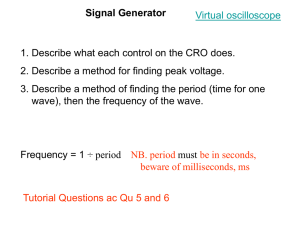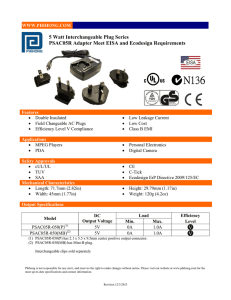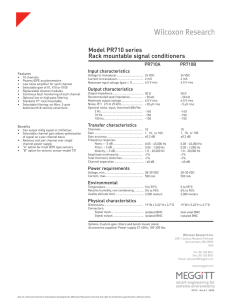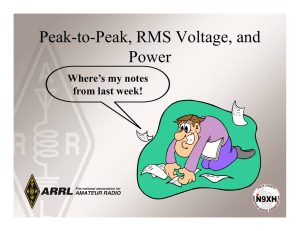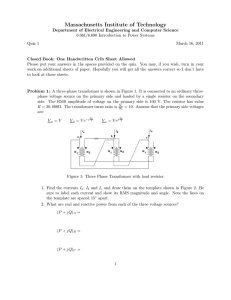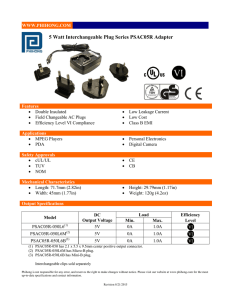Massachusetts institute of Technology Department of Nuclear Science and Engineering
advertisement
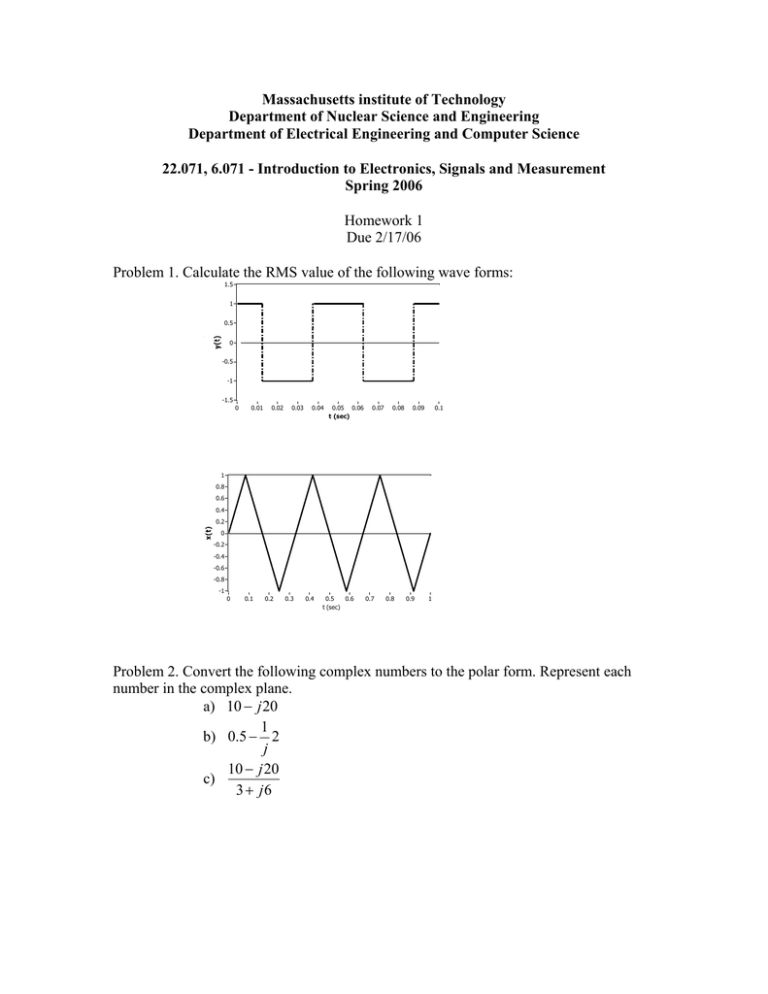
Massachusetts institute of Technology Department of Nuclear Science and Engineering Department of Electrical Engineering and Computer Science 22.071, 6.071 - Introduction to Electronics, Signals and Measurement Spring 2006 Homework 1 Due 2/17/06 Problem 1. Calculate the RMS value of the following wave forms: 1.5 1 0.5 0 -0.5 -1 -1.5 0 0.01 0.02 0.03 0.04 0.05 0.06 t (sec) 0.07 0.08 0.09 0.1 1 0.8 0.6 0.4 0.2 0 -0.2 -0.4 -0.6 -0.8 -1 0 0.1 0.2 0.3 0.4 0.5 0.6 t (sec) 0.7 0.8 0.9 1 Problem 2. Convert the following complex numbers to the polar form. Represent each number in the complex plane. a) 10 − j 20 1 b) 0.5 − 2 j 10 − j 20 c) 3 + j6 Problem 3. You work for Conserve Inc., a company that builds voltage conversion devices. The devices convert a voltage of constant amplitude VDC to an time varying “alternating” voltage. The efficiency of the alternating voltage signal is a function of the RMS value of the signal. In fact the efficiency is proportional to the RMS value. Device Α converts the constant voltage VDC to a time varying voltage whose frequency spectrum is shown on Figure 4(a). Device Β converts VDC to a signal whose frequency spectrum is shown on Figure 4(b). Your job is to determine, by looking at the spectral data, which device is more efficient according to the above definition. Justify your answer by determining the form of the time domain in each case. Figure 4(a). Spectrum from Device A Figure 4(b). Spectrum from Device B Problem 4. Two signals have been processed by a spectrum analyzer (a device that gives the frequency content of a signal) with the results are indicated on the following plots. The horizontal axis represents the frequency content expressed in terms of the mode number k and the vertical axis shows the corresponding signal amplitude at that frequency. Draw a qualitative graph of the corresponding signals in the time domain. Make sure that you indicate the relevant signal parameters in each case. Case A Case B Problem 5. Determine the Nyquist frequency and the Nyquist rate for the following signals. 1. y (t ) = 2sin(20π t ) + 4cos(30π t ) 2. y (t ) = 2sinc(20t ) 1 3. y (t ) = + sin(100π t ) cos(30π t ) t y( x) 1 x -½ ½ 4. 5. y (t ) = e−2t sin(70π t )

